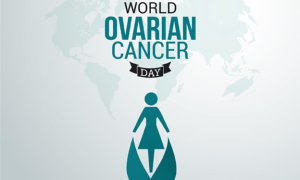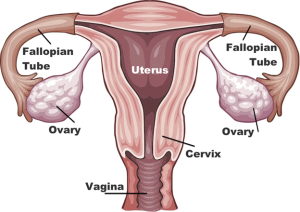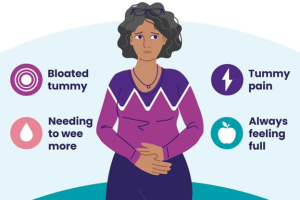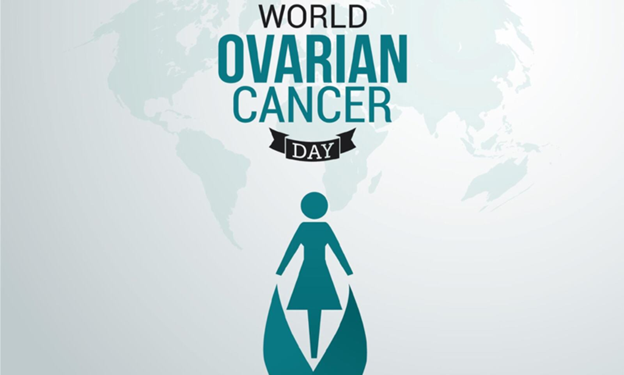Ovarian cancer is the deadliest gynaecological cancer, according to the Center for Disease Control (CDC), World Health Organization (WHO), and other health organizations. Additionally, it is the third most common cancer in women and the fifth leading cause of cancer-related deaths in women.

Source: The Hans India
Ovarian cancer referred to as the “silent killer,” is an adversary in the realm of women’s health. So the world on May 8th every year comes together to continue to raise awareness and improve education about ovarian cancer so that women have an idea of its elusive nature, symptoms, and risk factors.
The reasons why ovarian cancer continues to remain a silent killer is because of the nature of ovarian cancer, its vague symptoms, and the lack of effective screening methods. Despite these challenges, there is growing awareness, research, and promising developments in diagnostics and treatment as researchers have discovered that early detection largely improves treatment outcomes, increasing chances of survival, and reducing mortality rates from ovarian cancer.
In this blog post, Wellahealth aims to educate and empower women and those around them about ovarian cancer, its signs, and risk factors to intensify the fight against this deadly disease.
Origin of Ovarian Cancer
Ovaries are paired female reproductive glands from which eggs form and these glands produce essential female hormones namely estrogen and progesterone. Estrogen and progesterone are important in puberty (development of feminine traits like body shape, hair, breast, and menarche), fertility, and pregnancy.

Source: Live Science (Shutterstock)
Ovarian cancer begins in these reproductive glands in women and spreads from the ovaries to the lungs, liver, and stomach.
The most common type of ovarian cancer is epithelial ovarian cancer, accounting for over 90% of all cases. Ovarian cancers are classified based on origins into epithelial, germ cell, and sex cord-stromal ovarian cancers.
Epithelial ovarian cancer arises from the cells that cover the ovary’s outer surface. Germ and stromal tumours originate from the egg-producing cells and the connective tissue cells, respectively.
Risk factors
Risk factors that predispose a woman to developing ovarian cancer include Age, family history, reproductive history, hormonal therapy, and genetic mutations.
- Age: Ovarian cancer is commoner in older women. In 2020, WHO recorded higher rates of ovarian cancer in women aged 50-74 years.
- Positive family history: Women with a family history of ovarian, breast, or colorectal cancer have a higher risk of developing ovarian cancer.
- Reproductive history: Reproductive histories such as early menarche ( started menstruation early), nulligravida (never been pregnant), or late menopause increase the risk of developing ovarian cancer.
- Hormonal therapy: Certain hormone therapies, particularly long-term estrogen replacement therapy, have been found to slightly increase the risk of developing ovarian cancer in women.
- Genetic mutations: Inherited mutations in genes such as BRCA1 and BRCA2 significantly increase the risk of developing ovarian cancer.
Signs and symptoms

Source: Falkirk Herald
Non-constitutional or non-specific symptoms include; abdominal bloating, pelvic or abdominal pain, difficulty eating or feeling full quickly, weight loss, frequent urination, back pain, and changes in bowel habits.
Due to these subtle and non-specific symptoms in early stages, ovarian cancer is often not diagnosed until it has advanced which makes treatment more challenging.
Detection
Ovarian cancer symptoms mimic other diseases, however, any individual with these symptoms must consult a doctor. It is essential if the symptoms persist as early detection of ovarian cancer reduces mortality and improves treatment outcomes.
Unfortunately, there’s currently no reliable screening test, so awareness of the body and its changes and symptoms is crucial to combating this disease.
Way Forward
This year’s ovarian cancer day, Wellahealth Africa is educating women on ways to empower themselves and reduce the mortality associated with this disease. Wellahealth advises all women to learn about risk factors, pay attention to their bodies and changes that may occur, and schedule regular checkups so that any lingering symptom is discussed adequately with a healthcare professional.
Conclusion
Ovarian cancer remains a foe, early detection through increased awareness and regular screenings is crucial for improved survival rates. Let’s stay informed about risk factors and signs, advocate for more research towards halting this disease through early detection, and support those impacted by ovarian cancer.
Together, we can make a difference.
To get an affordable and accessible healthcare plan and discuss with a doctor about health symptoms, send Wellahealth Africa a message on WhatsApp today!
Dr Ifeoma Uduh, Dr John Afam






